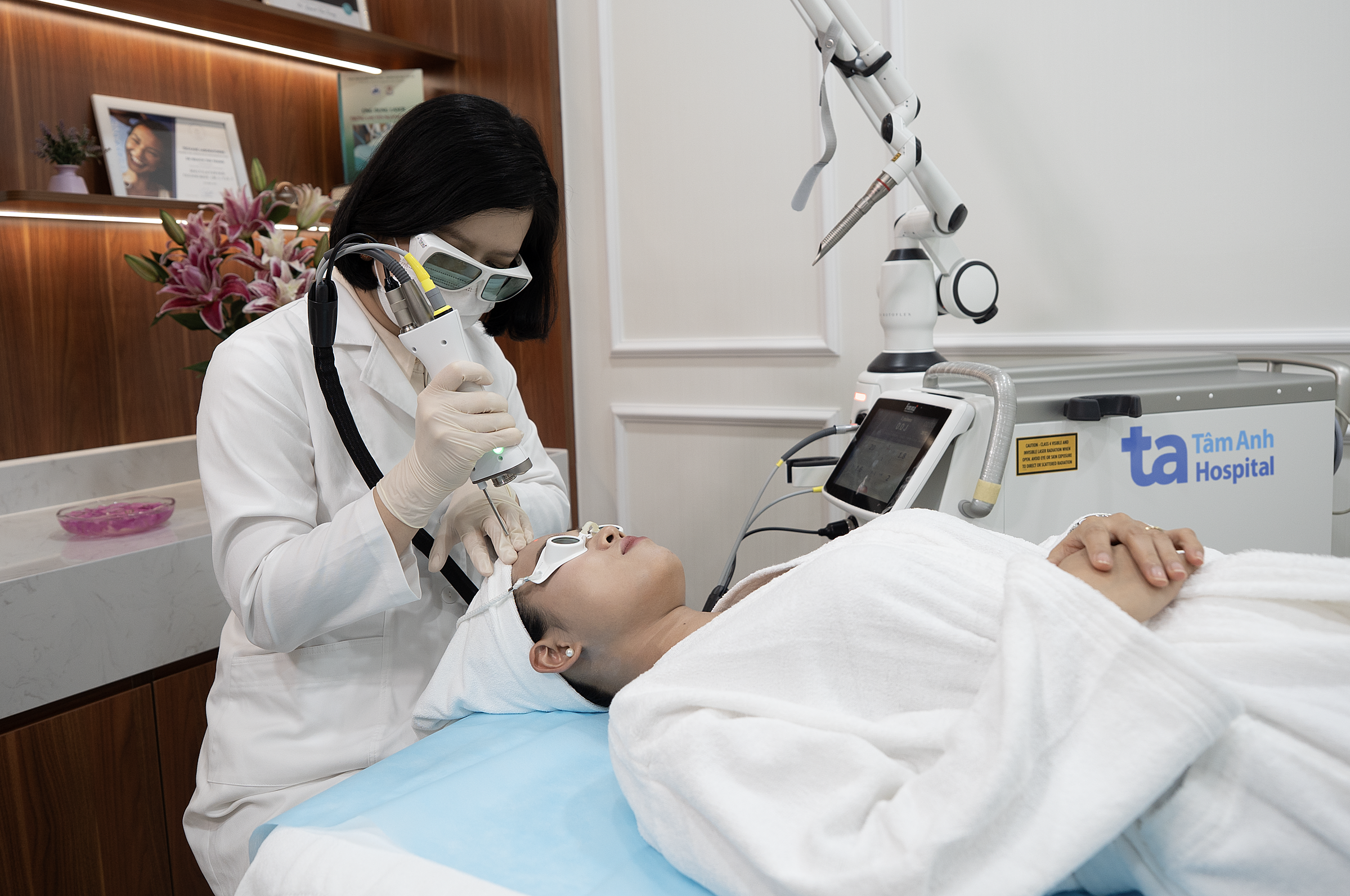Answer:
Melasma is a chronic hyperpigmentation disorder that occurs when melanin-producing cells overproduce and unevenly distribute pigment, forming dark spots or patches on the skin. Commonly appearing on the forehead, cheeks, nose, around the mouth, chin, neck, or arms, melasma poses no health risk but can impact self-esteem and appearance.
There are three common types of melasma: epidermal melasma (superficial), dermal melasma, and mixed melasma (a combination of both). Epidermal melasma typically responds well to treatment. Dermal and mixed melasma tend to be more persistent, prone to recurrence, and require longer treatment periods.
Melasma can be caused by various factors, including hormonal changes (during pregnancy, postpartum, or while using birth control pills), excessive exposure to sunlight or blue light from electronic screens, prolonged stress, use of unsuitable cosmetics, and side effects of certain medications (such as those for epilepsy, depression, or malaria).
 |
A dermatologist treats melasma with laser for a woman. Illustrative photo: Tam Anh General Hospital |
Treating melasma is complex and doesn't guarantee complete removal in all cases. However, with a proper treatment plan and adherence to a dermatologist's guidance, significant control and improvement are possible.
Current treatment methods include topical products containing skin-brightening agents; oral antioxidants and hormone regulators; and especially aesthetic technologies like laser therapy, electrophoresis, and micro-needling. New-generation laser technologies like Fotona Starwalker QX and Fotona SP Dynamis utilize customizable ultra-short and long laser pulses, precisely targeting pigmented areas while minimizing damage to surrounding skin. This helps shorten recovery time and improve treatment safety.
Treatment effectiveness depends on several factors: the cause and severity of the melasma, skin type, depth of pigmentation, and individual response. Recently developed melasma usually responds better to treatment than long-standing cases. Melasma caused by external factors (like sun exposure or cosmetics) tends to be easier to treat than melasma caused by hormonal imbalances or genetics.
Post-treatment, proper skincare is essential to prevent recurrence. This includes using broad-spectrum sunscreen with an SPF of 30 or higher daily, wearing wide-brimmed hats and sunglasses, and avoiding sun exposure during peak hours (10 a.m. to 3 p.m.). Maintaining a healthy lifestyle with a diet rich in fruits and vegetables, adequate sleep, stress reduction, and avoiding harsh or unverified cosmetics is also crucial.
If your melasma continues to spread despite regular skincare, consult a dermatologist for accurate diagnosis and a personalized treatment plan. While complete eradication might not always be achievable, significant improvement is possible with proper diagnosis, consistent treatment, and patience.
Master, Doctor Quach Thu Trang
Department of Dermatology, Tam Anh General Hospital Hanoi
| Readers can submit questions about dermatology and skin aesthetics here for doctor's answers. |












